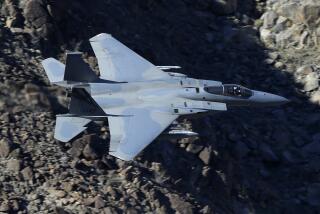Turbulent Times for U.S. Air Marshals
- Share via
WASHINGTON — The fatal shooting of a passenger at Miami International Airport on Wednesday has put the Federal Air Marshal Service squarely in the public eye.
The service operates under the Transportation Security Administration, one of 22 agencies that were merged in 2003 to create the Homeland Security Department.
For the air marshals, it has been a rocky transition. In the last two years, they have been shuffled from the TSA to another Homeland Security branch and then back to TSA. Morale has plummeted as the marshals battled new management, mostly retired Secret Service officers without air marshal experience.
The two sides have clashed over operating procedure, dress code, the marshals’ inability to speak out about safety issues, and plans to expand their numbers by moving passenger screeners into air marshal jobs. In many of the conflicts, air marshals charged that management directives undermined their mission by reducing their ability to blend in with other passengers.
In November, the American Civil Liberties Union filed a suit against the Department of Homeland Security over a policy that forbids the marshals to speak publicly about their jobs or to criticize the service.
The case was triggered when a marshal was suspended after raising concerns about safety procedures. He was returned to active duty the day after the suit was filed, but he has been the subject of four investigations.
The marshals have complained about pre-boarding procedures and a requirement that they identify themselves to get discount rates at certain hotels -- measures they say make them obvious to other travelers and potentially to terrorists.
Another controversial change required the marshals to abandon plainclothes attire for a more conspicuous military-style dress code that included short haircuts and suits, regardless of the destination or time of year.
Marshals argue that the emphasis on form undermines their ability to function and shows where their new managers’ priorities lie.
One checklist that is used to evaluate marshal performance leads with “compliance with dress code” and “compliance with grooming standards.” The last item, No. 24, is “weapon handling skills and safety.”
The service was formed in 1968, and by 1987 there were about 400 marshals, according to an agency history. At the time of the attacks on Sept. 11, 2001, that number had fallen to 33.
Today, the service operates with a $600-million annual budget and employs about 2,000 men and women who work in pairs, each covering as many as four flights a day. Their exact numbers and the routes they work are kept secret.
Though the agents say maintaining anonymity is vital if they are to protect the nation’s skies, the attention the incident generated may help attract more funding for one of the most troubled branches of Homeland Security.
The shooting, said Jon Adler, a vice president of the Federal Law Enforcement Agents Assn., provides “a strong argument” for Congress to put more marshals on flights.
More to Read
Sign up for Essential California
The most important California stories and recommendations in your inbox every morning.
You may occasionally receive promotional content from the Los Angeles Times.










